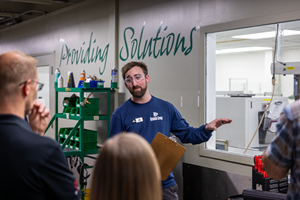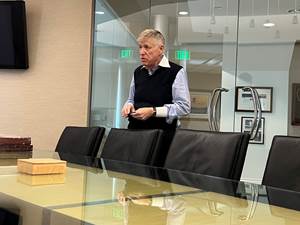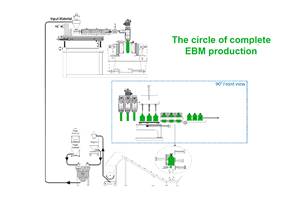Upward Pricing for Commodity Resins with Exception of PP; Flat Pricing Underway?
Higher feedstock prices, strong demand, and tariffs drive price hikes upwards for now.
Commodity resin pricing trends, perhaps particularly in fourth quarter, are always interesting. A combination of higher raw material prices for crude oil, ethane and ethylene; strong demand; and the impact of tariffs helped drive prices of PE, PS, PVC and PET upwards at the end of third quarter. PP, meanwhile, moved slightly down.
Overall projections for the remainder of the year are for flat pricing with the potential for a slight uptick in the cases of PVC, PET, and PP, according to purchasing consultants from Resin Technology, Inc. (RTi), Fort Worth, Texas; senior editors from Houston-based PetroChemWire (PCW,); and CEO Michael Greenberg of the Plastics Exchange in Chicago. Here’s a look at projections for each.
● PE: Prices moved up 3¢/lb in September, and suppliers were seeking additional 2-4¢/lb price hikes this month, though the latter may end up having no legs, according to Mike Burns, RTi’s v.p. of PE markets and PCW senior editor David Barry. Said Burns,“The 3¢/lb implemented was a demand-driven increase, with tariffs on China having on impact on any company that ships out anything using stretch wrap film, garbage and grocery bags, etc..” He noted that big box retail stores cannot call China for product as that country cannot compete without the cheap U.S. resin. As a result, many domestic processors of PE film—accounting for nearly 65% of the PE market—issued price increases of 4%, citing both strong demand and higher feedstock (ethane/ethylene) prices. “I expect this demand to continue through the rest of the year—many large processors are outsourcing.”
Burns and Barry both venture that PE prices for the remainder of the year will be flat. Said Barry, “I don’t believe PE supplier inventories will be sufficiently reduced—while processors also aim to manage inventories in the last two months of the year…and the market fundamentals are not there to support further increases. The exception might be if Brent crude oil rose up to $90/bbl from $80/bbl.” Burns sees the potential for processors being able to negotiate lower PE contract prices as we move into 2019.
The Plastics Exchange’s Greenberg characterized the spot PE market with above average activity and higher prices—HDPE injection grades led at 1.5¢/lb higher and L/LLDPE film grades at about 1¢/lb higher, by the first week of October. He noted that the surge of buying had begun several weeks previously due to deeply discounted prices. “Even as the lowest prime offers had been scooped, buyers were not deterred by fresh offers priced a penny or two higher.”
● PP: Prices dropped 1¢/lb in September in step with propylene monomer, and expectations for the October-December time frame were for fairly flat pricing, according to Scott Newell, RTi’s v.p. of PP markets, PCW senior editor Dave Barry, and the Plastic Exchange’s Greenberg.
Monomer production issues—particularly related to the new Enterprise and Dow on-purpose propylene (PDH) plants, have continued due to harsh operating conditions—higher temperatures and catalyst sensitivity that make them harder to operate—according to Barry. “PP suppliers are constrained because of tight propylene…the outlook for pricing is not going to change much as domestic PP prices are the highest the world. We will keep seeing more imported PP resin and PP finished goods. So far, it hasn’t made much difference to PP resin prices due to both planned and unplanned outages.”
Both Barry and Newell project a continued tight PP market into next year due to monomer constraints. Greenberg reported that the continued flow of imports, which can be 100 million lb/month or more, has helped to fill the gaps, especially as production disruptions have impacted the already tight supplies.
● PS: Prices moved up 2¢/lb in September, driven by rising feedstock costs, but the projected trajectory was for generally flat pricing this month and in November, according to both Robin Chesshier, RTi’s v.p. of PE, PS and nylon 6 markets, and PCW’s Barry.
Both sources note that while a September ethylene contract settlement by some parties of 33.75¢/lb—up 5¢/lb from August—was one factor, benzene contract prices only went up by 10¢/gal. The latter accounts for 70% of PS production cost, pointed out Barry.
Adds Chesshier, “There ought not to have been any increase based on raw material costs. Polystyrene suppliers were asking for 4¢/lb when their cost was only 1¢/lb.” She ventures that prices in November could be pressured downward if feedstock costs remain flat or drop along with seasonally slowed PS demand. Barry notes that while there was some potential for a PS price hike if crude oil prices spike up further pressuring benzene prices upwards; benzene prices have not been following crude oil prices.
● PVC: While prices continued flat through September, suppliers were out with a 2¢/lb increase for this month, a move attributed to at least a partial September ethylene contract price increase of 5¢/lb. Mark Kallman, RTi’s v.p. of PVC and engineering resin markets,ventures the increase could be strongly challenged by processors, due to lower export prices, with this month’s prices flat-to-up by 1¢/lb.
Another price increase for November is also emerging, according to PCW senior editor Donna Todd. She notes that PVC suppliers had also absorbed three other ethylene contract price hikes since May—bringing the total increases to 7.75¢/lb, which would infer an increase in PVC production costs of 3.72¢/lb. “This gives suppliers the incentive to try for another increase of about 2¢/lb but a price hike in Nov. would face even stiffer headwinds than one in October.”
Both Kallman and Todd note that resin buyers typically expect prices to ease going into fourth quarter. Kallman said that while there are some PVC maintenance plant shutdowns scheduled for fourth quarter, an improvement in feedstock costs, domestic seasonal slowdown, and continued softer global demand are likely to keep the market relatively balanced.
● PET: Prices for domestic bottle-grade PET ended September unchanged from August at either side of 80 cents/lb for truckloads and bulk trucks (48,000 lb) on a delivered basis to end users on the East Coast and West Coast, and the mid-80s cents/lb to Midwest locations, according to PCW senior editor Xavier Cronin. Imported PET remained plentiful—coming from locations throughout the world—with prices largely at parity with domestic PET, with some higher numbers for inland delivery.
Cronin expects that prices this month will likely rise a penny or two driven by strong demand from a bottle and packaging sector producing at high rates due to strong consumer demand for many products at the retail level. He ventures November prices would ease down by 3-4¢/lb, based on estimates from supplier sources on the seasonal slowdown of consumption of carbonated soft drinks and other beverages sold in single-use plastic bottles.
Related Content
Medical Molder, Moldmaker Embraces Continuous Improvement
True to the adjective in its name, Dynamic Group has been characterized by constant change, activity and progress over its nearly five decades as a medical molder and moldmaker.
Read MoreUS Merchants Makes its Mark in Injection Molding
In less than a decade in injection molding, US Merchants has acquired hundreds of machines spread across facilities in California, Texas, Virginia and Arizona, with even more growth coming.
Read MoreGet Color Changes Right In Extrusion Blow Molding
Follow these best practices to minimize loss of time, material and labor during color changes in molding containers from bottles to jerrycans. The authors explore what this means for each step of the process, from raw-material infeed to handling and reprocessing tails and trim.
Read MoreLatest Data on Bottled Water Shows Continued Strong Growth
Bottled water’s volume surpassed soft drinks for the first time in 2016 and has done so every year since.
Read MoreRead Next
See Recyclers Close the Loop on Trade Show Production Scrap at NPE2024
A collaboration between show organizer PLASTICS, recycler CPR and size reduction experts WEIMA and Conair recovered and recycled all production scrap at NPE2024.
Read MoreFor PLASTICS' CEO Seaholm, NPE to Shine Light on Sustainability Successes
With advocacy, communication and sustainability as three main pillars, Seaholm leads a trade association to NPE that ‘is more active today than we have ever been.’
Read MoreBeyond Prototypes: 8 Ways the Plastics Industry Is Using 3D Printing
Plastics processors are finding applications for 3D printing around the plant and across the supply chain. Here are 8 examples to look for at NPE2024.
Read More






























